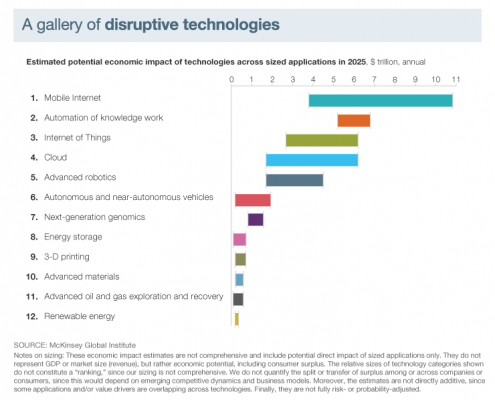Disruption And Innovation in Education
Disruption has probably been overused in many areas now. From media, to advertising; from innovation, to consulting.
Disruption is also one of the buzzwords that have been used in education lately, yet few really seem to know what it means. I found this article written by Dr. Michelle Weise, who was a senior research fellow with the Clayton Christensen Institute for Disruptive Innovation at the time of writing. She is now executive director of the Innovation Lab at Southern New Hampshire University.
In higher education especially, there’s a tendency to take an exciting technological advancement, call it a disruptive innovation, cram it into the classroom experience, and then hope that efficiencies will magically appear. But a disruptive innovation doesn’t necessarily entail a technological breakthrough. In fact, in our most recent work in higher education called Hire Education, Clayton Christensen and I underscore that there is true disruptive potential in online competency-based education (CBE) aligned to workforce needs even though the parts of this whole are not at all new.
She points out, that we all might have heard of workforce training, competencies, and online learning. But online competency-based education (CBE) is revolutionary in her opinion, as it marks the convergence of multiple vectors: the right learning model, the right technologies, the right customers, and the right business model. The theory of disruptive innovation (see also my other articles on disruptive innovation …) can help to illustrate how the inertia of academia inevitably makes way for upstart disruptors, to seize a market of untapped connections between learning and work.
Most institutions get locked into the complex orchestration of resources, priorities, and processes of not just one but three very different, costly, and conflicting value propositions that center on teaching, research, and facilitating a social community of students. In this complex orchestration, it becomes impossible to parse the exact costs of producing these interdependent lines of business. And there’s no way that technology will somehow magically disentangle these locked business models to create a newly efficient model of higher education.
Meanwhile, there are a growing number of students who are finding themselves over-served by these augmented, bundled services. Nearly 71 percent of U.S. “college” students do not participate in the residential college experience that we tend to glorify; most of them commute, work part-time, have family commitments, or do not have the luxury of majoring in a field that has no direct relevance to their future employment goals. These students are often looking for flexible, cost-effective, and streamlined programs that move them ahead in their working lives.
Full story here: The disruptive innovation that will skill up America
Other stories on this blog:


 Pixabay CC0
Pixabay CC0



Leave a Reply
Want to join the discussion?Feel free to contribute!